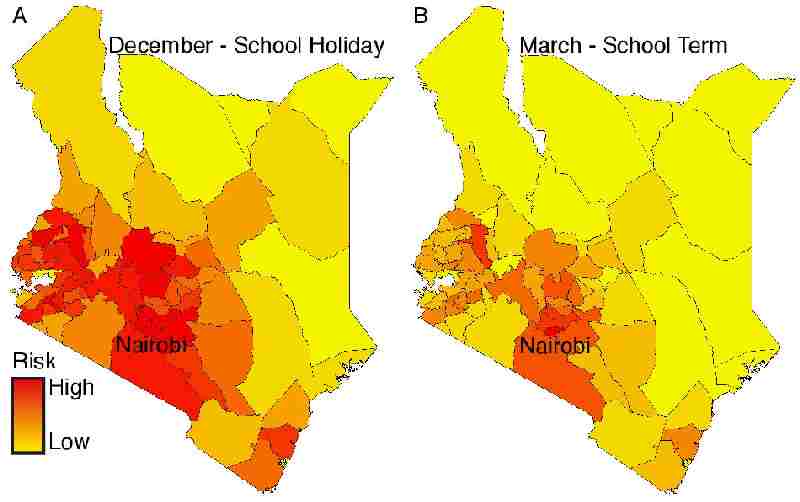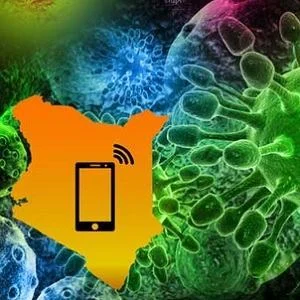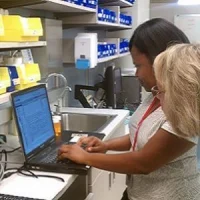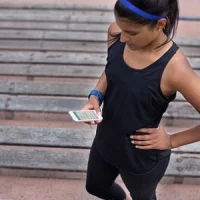A new study published in PNAS demonstrates that mobile phone data could be a useful tool for understanding how infectious diseases are spread seasonally. Using anonymous mobile phone records for more than 15 million people in Kenya, Princeton University and Harvard University researchers were able to track the spread of rubella in the African country.
The study is the first to quantitatively show that mobile phone data can predict seasonal disease patterns. Using mobile phone data in this way could help policymakers guide and evaluate health interventions like the timing of vaccinations and school closings. The researchers hope to also apply their methodology to measles and other infections shaped by human movement like malaria and cholera.
"One of the unique opportunities of mobile phone data is the ability to understand how travel patterns change over time," says lead author C. Jessica Metcalf, assistant professor of ecology and evolutionary biology and public affairs at Princeton's Woodrow Wilson School of Public and International Affairs. "And rubella is a well-known seasonal disease that has been hypothesised to be driven by human population dynamics, making it a good system for us to test."
The study sought to determine whether cellphone users and their movement around Kenya could predict the seasonal spread of rubella. Prof. Metcalf and colleagues used available records to analyse mobile phone usage and movement between June 2008 and June 2009 for more than 15 million cellphone users in that country. They were able to determine a daily location for each user as well as the number of trips these users took between the provinces each day. Overall, more than 12 billion mobile phone communications (both calls and text messages) were recorded anonymously and linked to a province.
The research team then compared the phone data analysis with a highly detailed dataset on rubella incidence in Kenya. They found that the cell phone movement patterns lined up with the rubella incidence figures. In both of their analyses, rubella spiked three times a year: September and February primarily, and, in a few locations, rubella peaked again in May. This showed the researchers that cellphone movement can be a predictor of infectious-disease spread.
The findings were in line with the research team's predictions — rubella is more likely to spread when children interact with one another at the start of school and after holiday breaks. Across most of the country, this risk then decreases throughout the rest of the school-term months (Figure 1).
"The potential of mobile phone data for quantifying mobility patterns has only been appreciated in the last few years, with methods pioneered by authors on this paper," says lead author Amy Wesolowski, a postdoctoral fellow at Harvard's School of Public Health.

Figure 1. Using mobile phone data, the researchers constructed these maps to characterise rubella fluxes across Kenya. Section A shows the risk of rubella during a major holiday and school-term break. Section B shows the risk of rubella while school is in session. Most provinces have lower risks during the school year with higher outbreak rates during breaks and holidays.
Source: Woodrow Wilson School of Public and International Affairs
Image credit: Amy Wesolowski, C. Jessica Metcalf
The study is the first to quantitatively show that mobile phone data can predict seasonal disease patterns. Using mobile phone data in this way could help policymakers guide and evaluate health interventions like the timing of vaccinations and school closings. The researchers hope to also apply their methodology to measles and other infections shaped by human movement like malaria and cholera.
"One of the unique opportunities of mobile phone data is the ability to understand how travel patterns change over time," says lead author C. Jessica Metcalf, assistant professor of ecology and evolutionary biology and public affairs at Princeton's Woodrow Wilson School of Public and International Affairs. "And rubella is a well-known seasonal disease that has been hypothesised to be driven by human population dynamics, making it a good system for us to test."
The study sought to determine whether cellphone users and their movement around Kenya could predict the seasonal spread of rubella. Prof. Metcalf and colleagues used available records to analyse mobile phone usage and movement between June 2008 and June 2009 for more than 15 million cellphone users in that country. They were able to determine a daily location for each user as well as the number of trips these users took between the provinces each day. Overall, more than 12 billion mobile phone communications (both calls and text messages) were recorded anonymously and linked to a province.
The research team then compared the phone data analysis with a highly detailed dataset on rubella incidence in Kenya. They found that the cell phone movement patterns lined up with the rubella incidence figures. In both of their analyses, rubella spiked three times a year: September and February primarily, and, in a few locations, rubella peaked again in May. This showed the researchers that cellphone movement can be a predictor of infectious-disease spread.
The findings were in line with the research team's predictions — rubella is more likely to spread when children interact with one another at the start of school and after holiday breaks. Across most of the country, this risk then decreases throughout the rest of the school-term months (Figure 1).
"The potential of mobile phone data for quantifying mobility patterns has only been appreciated in the last few years, with methods pioneered by authors on this paper," says lead author Amy Wesolowski, a postdoctoral fellow at Harvard's School of Public Health.

Figure 1. Using mobile phone data, the researchers constructed these maps to characterise rubella fluxes across Kenya. Section A shows the risk of rubella during a major holiday and school-term break. Section B shows the risk of rubella while school is in session. Most provinces have lower risks during the school year with higher outbreak rates during breaks and holidays.
Source: Woodrow Wilson School of Public and International Affairs
Image credit: Amy Wesolowski, C. Jessica Metcalf
References:
Wesolowski A, Metcalf CJE et al. (2015) Quantifying seasonal populationfluxes driving rubella transmission dynamics using mobile phone data.
Proceedings of the National Academy of Sciences, July 21, 2015;
201423542 DOI: 10.1073/pnas.1423542112
Latest Articles
healthmanagement, mobile technology, cellphones, Kenya, rubella, infectious diseases
A new study published in PNAS demonstrates that mobile phone data could be a useful tool for understanding how infectious diseases are spread seasonally.








